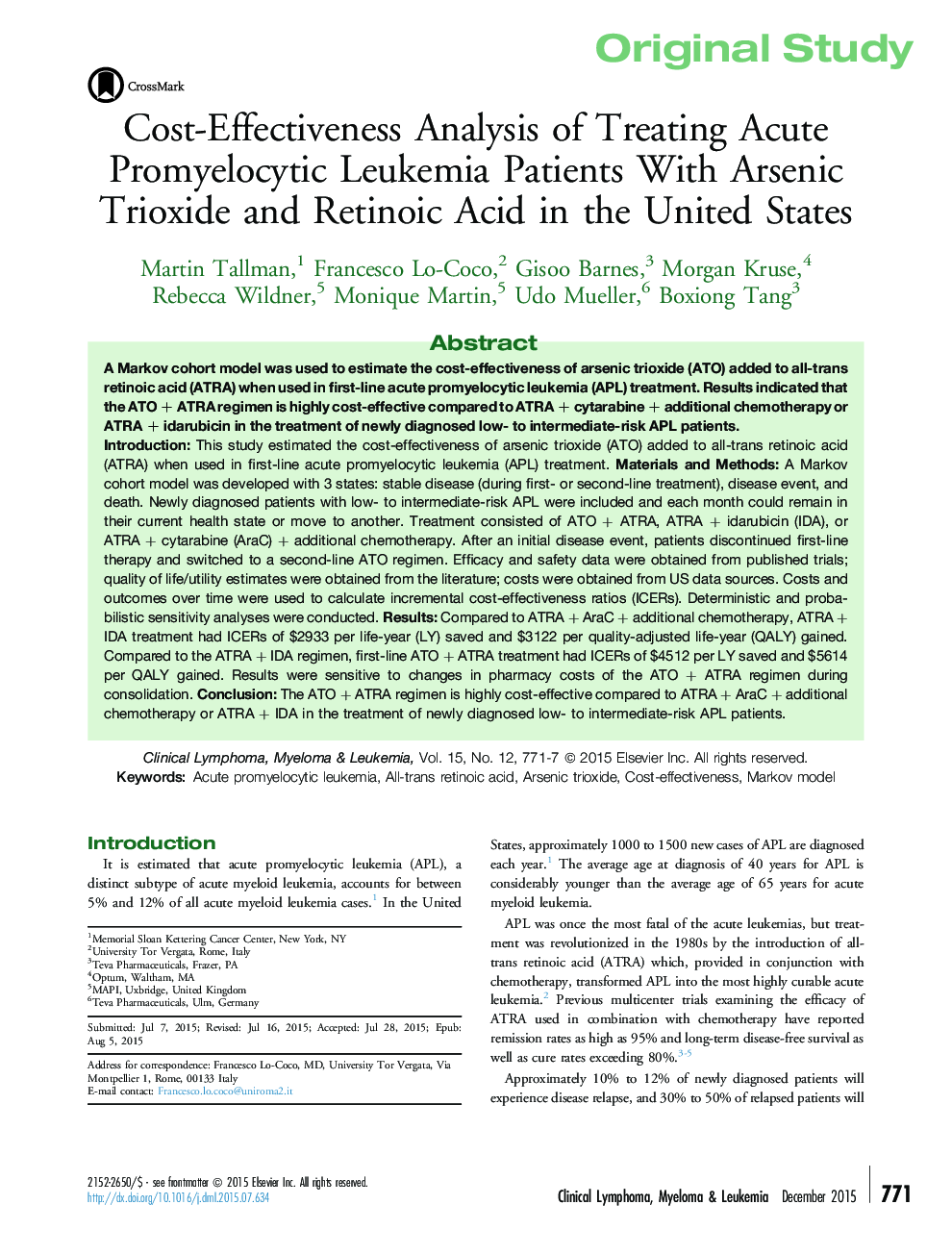| Article ID | Journal | Published Year | Pages | File Type |
|---|---|---|---|---|
| 2754311 | Clinical Lymphoma Myeloma and Leukemia | 2015 | 7 Pages |
IntroductionThis study estimated the cost-effectiveness of arsenic trioxide (ATO) added to all-trans retinoic acid (ATRA) when used in first-line acute promyelocytic leukemia (APL) treatment.Materials and MethodsA Markov cohort model was developed with 3 states: stable disease (during first- or second-line treatment), disease event, and death. Newly diagnosed patients with low- to intermediate-risk APL were included and each month could remain in their current health state or move to another. Treatment consisted of ATO + ATRA, ATRA + idarubicin (IDA), or ATRA + cytarabine (AraC) + additional chemotherapy. After an initial disease event, patients discontinued first-line therapy and switched to a second-line ATO regimen. Efficacy and safety data were obtained from published trials; quality of life/utility estimates were obtained from the literature; costs were obtained from US data sources. Costs and outcomes over time were used to calculate incremental cost-effectiveness ratios (ICERs). Deterministic and probabilistic sensitivity analyses were conducted.ResultsCompared to ATRA + AraC + additional chemotherapy, ATRA + IDA treatment had ICERs of $2933 per life-year (LY) saved and $3122 per quality-adjusted life-year (QALY) gained. Compared to the ATRA + IDA regimen, first-line ATO + ATRA treatment had ICERs of $4512 per LY saved and $5614 per QALY gained. Results were sensitive to changes in pharmacy costs of the ATO + ATRA regimen during consolidation.ConclusionThe ATO + ATRA regimen is highly cost-effective compared to ATRA + AraC + additional chemotherapy or ATRA + IDA in the treatment of newly diagnosed low- to intermediate-risk APL patients.
